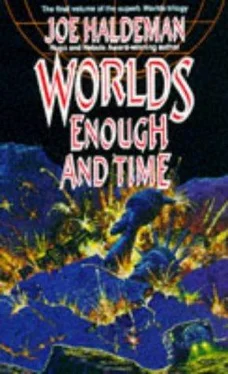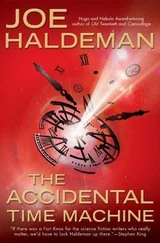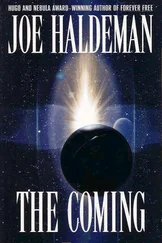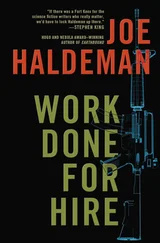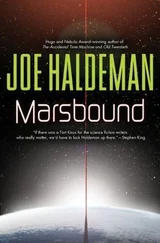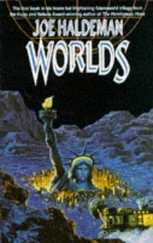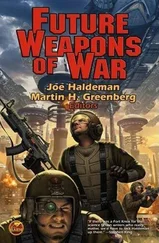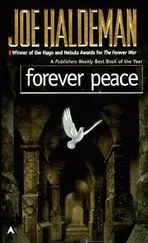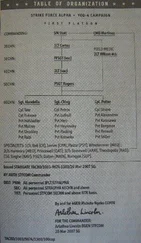“Not really. Maybe a little. I appreciate the whys and wherefores of it. Bonding to the creche mother.”
“You had one yourself,” Dan said.
She looked at him curiously. “You didn’t. You had a real mother.” Dan was from Earth, from Pennsylvania.
“Wet nurse., So they tell me. I guess I never got the chance to meet her when I was old enough to remember.”
“I was suckled at me mither’s breast,” John said with his stagy Irish voice, “and sure you can see how much good it did me.”
2. FROM THE CRADLE TO THE GRAVE TO THE CRADLE
PRIME
Two days after witnessing the birth, or decantation, O’Hara attended a “specialty presentation” meeting that wasn’t really of much interest to her, but the woman leading it was a friend, and she didn’t want her embarrassed by underattendance. Twenty people did show up, including Dan, whose position as Earth/New New Liaison left him with a lot of time on his hands.
The specialty presentation meetings were informal get-togethers where one Cabinet member was given two hours to talk about his or her department, and elicit advice or at least sympathy from whomever showed up. This particular meeting was run by and for Sylvine Hagen, who was in charge of Cryptobiology.
“I don’t know how many of you have visited our facility,” she said, “there’s not really much to see.” Behind her was the picture of a bent-around rectangle, like a squared-off section of a doughnut, cross-hatched into thousands of tiny squares. In one corner, eighteen of the squares were lit.
“The storage tanks themselves aren’t open to the public. They occupy the sector 2105 to 2345. Research and administration are in front of them—excuse me, forward of them—in 2115 to 2355. You could walk around the ship for weeks before you stumbled on us.
“It might seem remarkable that you could store ten thousand people in so small a space. But we really don’t take up much room, stacked up in… well, coffins.” She pointed to the diagram. “These lit spaces, our current customers… three of them actually are dead, and have gone into cryonics mode, frozen solid. We’ve had some objections to that.”
“That they ought to be recycled like anybody else?” someone said.
“That’s it. But it’s not a personal-privilege issue; they’re part of an ongoing experiment, as far as we’re concerned. Like the other fifteen, they entered suspended animation because they were dying of diseases that currently can’t be treated—in half of them, the doctors were unable to diagnose what was wrong with them, but there was no doubt they were about to die.”
She pushed a button and a few dozen squares lit up blue in the opposite corner of the diagram. “These are animal experiments, goats and rabbits and chickens. We’re working to improve the efficiency of the suspended-animation process. It’s up to ninety-eight percent survival in chickens. Rabbits and goats are about ninety-five and ninety percent. It goes roughly by the natural lifespan of the creature, unfortunately. It’s probably no better than eighty percent for people; maybe seventy-five percent. Which is why we aren’t all in there, waiting for Epsilon.”
“I don’t see how you can come up with such exact figures,” Dan said. “You must have lost as much information in the sabotage as the rest of us.”
“The process is completely automated; seventy-five to eighty percent was the figure before we had to start over from scratch. We haven’t made any system changes yet, and won’t until we’re certain we know what we’re doing.”
“Even at seventy-five percent, you wouldn’t have any shortage of volunteers,” O’Hara said.
“That’s true. It’s a rare day when we don’t get a call from somebody who just can’t take it anymore and wants to sleep for the next half-century. We explain the policy to them and refer them to therapy.”
“The policy is ‘nobody but the terminally ill’?”
“Yes, and then only if they’re not too old or too young—it would be certain death to someone who was still growing—and only if their cardiovascular and pulmonary systems can handle the shock of the slowdown. There are easier avenues to euthanasia available.
“We are directed to preserve the intent of the original designers, which was for the cryptobiosis unit to serve as an emergency lifeboat for all of us, in case something drastic happened. Maybe it will be different if we can eventually do as well on humans as we can on chickens. For now, no exceptions.”
She turned off the image and sat down. “If it were up to me, I would make exceptions. You know how it is. Too many of us are finding out this isn’t the cruise we signed up for. It isn’t like living in New New at all. A lot of the people I turn down for cryptobiosis are going to wind up in the mental ward or kill themselves.”
“But there’s no way for you to tell which,” Sam Wasserman said.
“And I wouldn’t want the responsibility of making the evaluation. But a person on the verge of suicide is terminally ill! The Psych people could selectively, secretly, offer us as an avenue of last resort.
“There are a few objections to allowing that, though; sticky ones. Sooner or later, it would become general knowledge. Cynics would claim we were using the patients as human experimental animals, and there would be some truth in that. And at the current state of the art, we would be offering them a kind of Russian roulette, a four-to-one chance of suicide, technically deferred.
“Then there’s the basic human rights problem. If we were to allow cryptobiosis to everybody who declared intent to suicide—which arguably we would have to do if we allowed the first one—we could wind up with a large fraction of the population out of commission. Some of them might be absolutely vital to us in an emergency.”
“And you can’t just thaw them out at will,” Dan said.
“No; it’s a continuous process, a gradual slowdown of metabolism and an even more gradual revivification. Currently it takes at least forty-eight years. And unless we come up with a totally different approach, that number’s not going to change much.”
“I remember the interview with those volunteers in New New,” O’Hara said. “I was about ten years old when they came out of it. That was pretty strange, like people suddenly appearing from your grandparents’ time. Are any of them aboard?”
“Only one, and he works for us. A GP named Horatio Horatio. All the others are dead or were too old to make the trip.”
A man O’Hara didn’t know raised his hand. “Anything unusual about their mortality? Causes, rates?”
“Well, you wouldn’t want to generalize from such a small sample—twelve went in and nine survived—unless they all had died of the same thing, which wasn’t the case. All of them but Double-H were pretty old at the start, which in retrospect was a mistake. But I’m sure all but one lived to be at least ninety, not counting the forty-eight years’ cryptobiosis. One died on Earth, murdered.”
“Did they have any sensation of passing time while they were in the tanks?” Sam asked. “Dreams?”
“It’s hard to separate fact from fancy. A lot of them had more elaborate recollections after they’d had time to think about it and talk to one another.”
“Elaborate?” Sam said.
“One man was very upset. He claimed he could remember every minute of the forty-eight years.”
“I remember him,” O’Hara said. “But it wasn’t true.”
“He was fantasizing, trying to get attention. After a few months he admitted it. But we’d made the mistake of not isolating them from each other—it seemed to make sense to keep them all in the same ward; compare their recovery signs.”
Читать дальше
